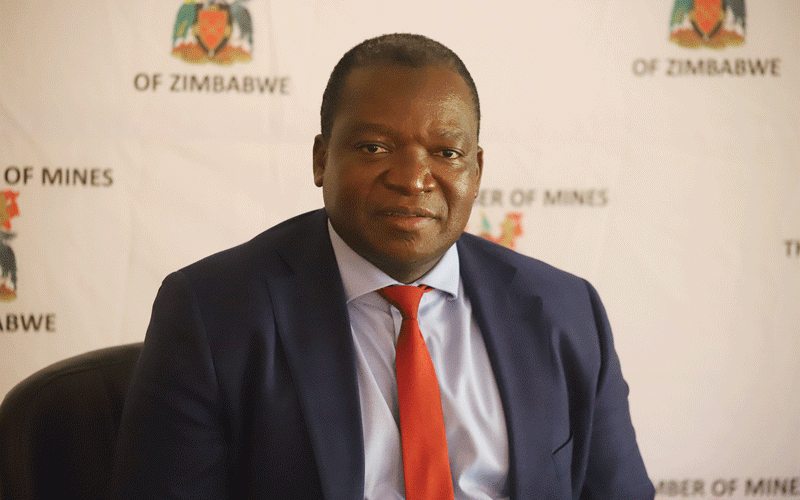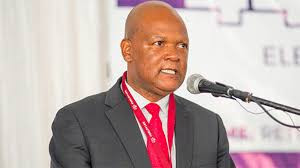THIS week’s article is inspired by a story my mother told me. The story is about a family with the following members: Everyone, Someone, Anyone, and Noone.
Their house needed to be cleaned, and Everyone expected Someone to do it. While Anyone could have done the job, in the end, Noone did it.
This story is a powerful reminder that we are all part of the solution in the journey to decarbonise our built environment.
It is not just everyone’s job or Someone’s responsibility; it is a collective effort that unites us all.
When we all play our part, we can ensure that Noone is left to do the job alone. We are all in this together.
My last article was premised on the roadmap to decarbonising the Zimbabwean built environment.
Keep Reading
- Why are we still pitting jobs against public health?
- Jurgen Klopp: Liverpool manager signs new two-year contract extension at Anfield until 2026
- COP27: Zimbabwe’s opportunity to shine
- Shot in the arm for Chiredzi, Bikita communities
However, it is not just about the roadmap; it is about the people who will make it a reality.
Identifying the stakeholders and defining their roles is crucial to actualising the commitment to a net zero sustainable Zimbabwe.
Your involvement as a stakeholder is not just significant; it is integral. Climate action has become a non-negotiable global phenomenon requiring all participation to enhance the chances of succeeding.
The involvement of all can only make sense if the roles are clearly defined and responsibilities are appropriately allocated, providing a sense of security and clarity.
This role clarity will ensure everyone knows their part and can contribute effectively.
This article explores the essential roles that various stakeholders must assume to decarbonise the built environment effectively.
The stakeholders are the general public, central government, local authorities, regulators, design consultants, builders and contractors, property owners and managers, financiers and investors, and occupiers.
The general public is essentially the beneficiaries and the victims simultaneously, and they play a role in demanding a sustainable net zero-built environment that would trigger everyone to act.
Every person in Zimbabwe has the right to an environment that is not harmful to their health or well-being and to have the environment protected for the benefit of present and future generations through reasonable legislative and other measures that prevent pollution and ecological degradation.
They also have the right to promote conservation, and secure ecologically sustainable development and use of natural resources while promoting economic and social development.
Further, the State must take reasonable legislative and other measures within the limits of the resources available to it, to achieve the progressive realisation of the rights set out.
This is, in fact, an extraction of Section 73 of the Zimbabwe Constitution on environmental rights.
The general public has the right, and the central government must craft appropriate legislation that protects the public.
Hence, the government has developed and implemented the Environmental Management Act and is working on the Climate Change Management Bill to protect Zimbabweans.
As things stand, the government, through the ministries of Environment, National Housing, and Local Government, in partnership with the Green Building Council of Zimbabwe and collaborating with The Climate Technology Centre and Network (CTCN), the implementation arm of the Technology Mechanism of the United Nations Framework Convention on Climate Change, hosted by United Nations Environmental Programme is working on Zimbabwe’s first Green Building Codes focused on Energy Efficiency.
The government's role in developing and implementing policies to decarbonise the built environment is clear and known from the above.
However, the government is also expected to create additional codes for materials or resource efficiency and enact and enforce the codes.
The ministry of Industry and Commerce should take charge of the thinking for practical implementation.
The South African government leads by example, as all its new buildings are designed and certified for energy efficiency.
Our government should consider and further ride on the existence of the Green Building Council of Zimbabwe (GBCZ), an active participant and, most importantly, a member of the World Green Building Council, to statutorily become the dedicated task force or agency for built environment decarbonisation, which will collaborate with industry stakeholders, non-governmental organisation (NGOs), and research institutions to set clear goals and targets for decarbonisation.
In other jurisdictions, such as Kenya and South Africa, the local chapters of green building councils are empowered by law to develop and promote certification schemes for green buildings, establish a national building standards framework for energy efficiency and encourage continuous improvement and innovation, a situation Zimbabwe can adopt.
Through its ministry of Information, the government should launch public awareness campaigns on the importance of decarbonising the built environment, educate building owners, occupiers, and the general public on sustainable practices, and promote success stories and case studies locally and abroad.
Through the ministry of Higher Education, universities should be funded to research new sustainable building materials and technologies, prioritise research and development of new green technologies, support building design and construction innovation, and collaborate with international partners to stay updated on best practices.
The curriculum for building design should be upgraded to accommodate sustainable practices.
Further, the training and upskilling programmes for building professionals should be enhanced with the capacity of vocational training centres in sustainable building practices while making continuous professional development mandatory for built environment professionals.
Tax breaks or grants for net zero buildings should be considered through the ministry of Finance. Carbon credits for green buildings should be recognised and traded.
At the same time, the Reserve Bank should work on modalities for introducing innovative financing to provide financial support for green building projects and initiatives and further low-interest loans for sustainable building practices.
Governments are responsible for monitoring and evaluating critical issues.
As such, a system will need to be established to track progress towards decarbonisation targets, regularly monitor and report on built environment emissions, and evaluate the effectiveness of policies and programmes.
This role would ideally be suited for the climate change department.
The government delegates the implementation of some of its policies to regulators. The Environmental Management Agency, Zimbabwe Energy Regulatory Authority, and Zimbabwe National Water Authority are expected to be part of the journey.
They should equally play their part as waste, water, and energy companies are under their watch and critical in decarbonisation.
Further, the built environment regulators, such as the Engineering Council of Zimbabwe and the Architects Council, should ensure their respective practitioners design energy-efficient buildings with sustainable materials, incorporate renewable energy systems and green technologies and ensure buildings are adaptable to climate change.
Local authorities, who also fall under the ministry of Local Government, should be capacitated to appreciate the green designs, approve as such and supervise the construction accordingly.
The builders and contractors should construct buildings that meet energy efficiency standards, use sustainable materials and practices and implement waste reduction and recycling measures.
Property owners and investors should invest in energy-efficient upgrades and retrofits, while property managers should implement sustainable operations and maintenance practices and monitor and report energy consumption and emissions.
Decarbonising the built environment in Zimbabwe requires a collaborative effort from all stakeholders.
By defining and assuming their roles, we can work towards a sustainable future and reduce our carbon footprint. The time for action is now.
In conclusion, decarbonising Zimbabwe's built environment is a collective responsibility requiring all stakeholders' coordinated effort.
By defining and embracing their respective roles and responsibilities, we can harness the power of collaboration and innovation to achieve a sustainable future.
The time for excuses is over; the time for action is now. Let us unite in our pursuit of a net-zero carbon-built environments where sustainable development and economic growth go hand-in-hand.
We can build a cleaner, greener, and more prosperous Zimbabwe for future generations. The future of our planet depends on it.
- Juru is the chairperson of the Green Building Council of Zimbabwe and chief executive officer at Integrated Properties.





